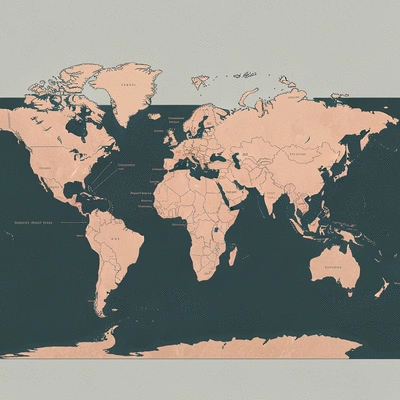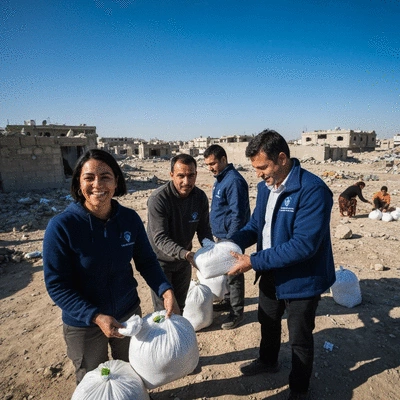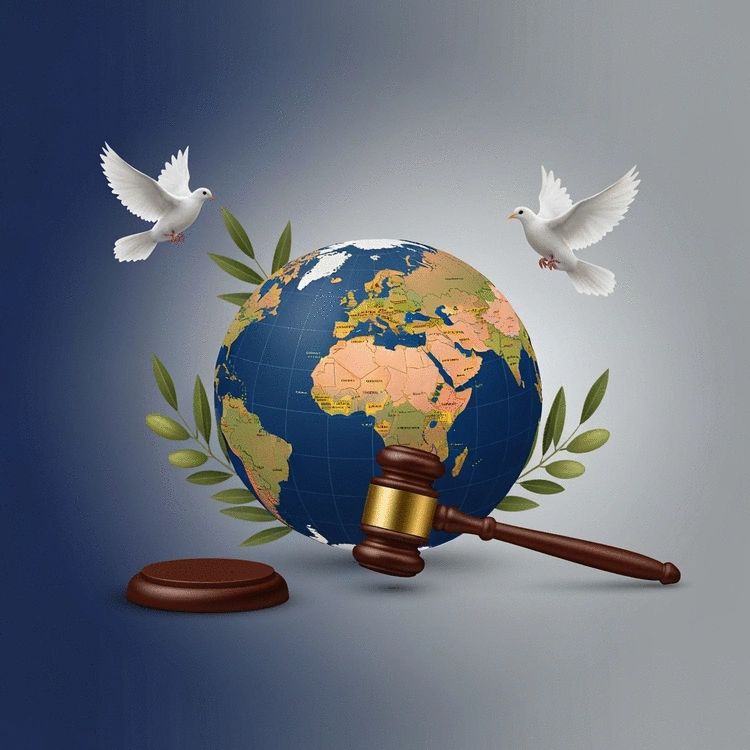As we navigate the complexities of our world, understanding the catalysts for global conflict has never been more crucial. What shifts in alliances and resources could shape the coming years? The insights from ongoing geopolitical tensions can offer a clearer picture of our future.
What You Will Learn
- Resource Scarcity: Increasing competition for essential resources like water and energy is heightening global tensions.
- Political Instability: Nations such as Venezuela and Sudan are emerging as potential conflict flashpoints due to internal strife.
- Superpower Rivalries: The escalating tensions between the U.S. and China are reshaping global alliances and conflict dynamics.
- Climate Change: Environmental issues are recognized as significant conflict drivers, worsening existing tensions and resource shortages.
- Major Conflict Hotspots: Regions like the Middle East, Ukraine, and the South China Sea are critical areas to monitor for potential escalations in conflict.
- Humanitarian Consequences: Escalating conflicts lead to significant humanitarian crises, displacing populations and straining global resources.
Global Conflict Hotspots and Contributing Factors for 2025
An overview of the key regions and underlying issues driving international tensions.
Key Factors Contributing to Global Tensions
Resource Scarcity
Competition over dwindling resources (water, energy, land) fuels disputes.
Political Instability
Internal strife in nations like Venezuela and Sudan creates regional flashpoints.
Superpower Rivalries
Escalating tensions between the U.S. and China redefine global alliances.
Climate Change
Environmental issues act as significant drivers of conflict, exacerbating existing tensions.
Major Conflict Hotspots for 2025
The Middle East
Ongoing conflicts, particularly the Israeli-Palestinian situation, remain critical.
Ukraine
War with Russia continues to threaten stability in Eastern Europe.
Africa
Political instability and insurgencies in DRC and Sudan are highly vulnerable.
Asia
Tensions in the South China Sea and Taiwan Strait, especially with U.S.-China relations.
Understanding Global Conflicts in 2025: An Overview
The geopolitical climate heading into 2025 is fraught with tension, as nations grapple with a myriad of challenges that could ignite global conflicts 2025. From territorial disputes to economic instability, the factors at play are complex and multifaceted. As a keen observer of world affairs, I find it essential to explore these catalysts, as the impact of conflicts on world affairs can resonate far beyond the immediate regions involved.

In this context, we must consider how shifting alliances, national interests, and historical grievances are coming to a head. The stakes are high, and understanding these dynamics can give us insight into what to expect in the coming years. The world is interconnected, and the ripples of conflict can affect global stability, economies, and humanitarian conditions.
Setting the Stage for Global Tensions
Several key factors are contributing to the rising tensions worldwide:
- Resource Scarcity: Competition over dwindling resources—such as water, energy, and arable land—is becoming increasingly heated.
- Political Instability: Nations experiencing internal strife, like Venezuela and Sudan, are potential flashpoints for regional conflicts.
- Superpower Rivalries: The escalating tensions between the U.S. and China shape global alliances and conflicts.
- Climate Change: Environmental issues are now recognized as significant drivers of conflict, exacerbating existing tensions.
Each of these elements plays a crucial role in shaping the landscape of global conflicts 2025. As we look ahead, it’s vital to remain aware of these dynamics and their potential to impact everyday lives.
Identifying Major Conflict Hotspots
As we examine potential conflict zones in 2025, several regions stand out due to their historical volatility and current tensions:
- The Middle East: Ongoing conflicts, particularly the Israeli-Palestinian situation, remain critical.
- Ukraine: The war with Russia continues to threaten stability in Eastern Europe.
- Africa: Nations facing political instability and insurgencies, like Democratic Republic of the Congo and Sudan, are highly vulnerable.
- Asia: The South China Sea and Taiwan Strait are also areas of tension, especially with U.S.-China relations at a boiling point.
- Latin America: Political crises in Venezuela are influencing regional migration and stability.
Understanding these hotspots is essential for grasping the broader implications of global conflicts, as they can lead to humanitarian crises, economic disruptions, and shifts in international relations. For more information on the complexities of these regions, explore our analysis of geopolitical risks in volatile regions.
Engage with Us!
As we delve deeper into the complexities of global conflicts in 2025, we want to hear your thoughts! Which of the following factors do you believe poses the greatest threat to global stability?
Frequently Asked Questions About Global Conflicts in 2025
What are the primary drivers of global conflicts in 2025?
The main drivers include resource scarcity (water, energy, land), political instability within nations, escalating superpower rivalries (e.g., U.S. and China), and climate change, which exacerbates existing tensions and resource shortages.
Which regions are identified as major conflict hotspots for 2025?
Key hotspots include the Middle East (specifically the Israeli-Palestinian conflict), Ukraine due to the ongoing war with Russia, parts of Africa (e.g., DRC, Sudan), and Asia (South China Sea and Taiwan Strait).
How does climate change contribute to global tensions?
Climate change acts as a conflict multiplier by intensifying resource scarcity, leading to displacement, migration pressures, and increased competition over dwindling natural resources, thereby exacerbating existing political and social tensions.
What role do superpower rivalries play in current global conflicts?
Tensions between major global powers, such as the U.S. and China, significantly influence global alliances and conflict dynamics. Their competition can fuel proxy conflicts, arms races, and diplomatic stalemates in various regions.
What are the humanitarian consequences of these escalating conflicts?
Escalating conflicts lead to severe humanitarian crises, including unprecedented levels of displacement, widespread suffering, food insecurity, and strain on global resources and aid organizations.
Summarizing the 2025 Conflict Landscape
As we take a step back and reflect on the intricate web of global conflicts in 2025, it's clear that these tensions impact not just the regions directly involved, but also have far-reaching consequences for human rights and global stability. The interconnected nature of these conflicts means that one event can ripple through various political and economic systems, leading to a cascade of challenges that require our attention. Here are some key takeaways:
- Humanitarian crises are escalating in conflict zones, leading to unprecedented levels of displacement and suffering.
- The Ukraine-Russia conflict continues to be a significant factor in European security, affecting energy supplies and diplomatic relations.
- Middle Eastern tensions, especially the Israeli-Palestinian conflict, are influencing regional stability and humanitarian rights.
- Emerging flashpoints in Asia, such as the Taiwan Strait, represent risks that could alter alliances and provoke further conflict.
- Climate change is increasingly becoming a catalyst for conflict, exacerbating resource shortages and migration pressures.

The implications of these conflicts extend to international organizations as they strive to mediate and resolve disputes. As highlighted in my work at The Stone Builders Rejected, understanding these dynamics is essential for anyone interested in global affairs.
Call to Action: Stay Informed and Consider the Role of Conflict Resolution
In light of the ongoing developments surrounding global conflicts, I urge you to stay informed. Consider how these issues affect not only the regions involved but also the broader landscape of world affairs. Knowledge is power! Here are a few steps you can take:
- Follow trusted news sources for updates on geopolitical events. For a deeper dive into current affairs, you might find our article on analyzing current event impacts insightful.
- Engage in discussions about conflict resolution and humanitarian efforts.
- Support organizations working towards peace and stability in conflict zones.
- Reflect on the impact of these conflicts on global trade, security, and human rights.
At The Stone Builders Rejected, we are committed to delivering insights that empower our readers to understand and engage with these pressing issues. The future may be uncertain, but by staying informed, we can contribute to meaningful conversations that drive change. Together, let’s work towards a more peaceful world.
Recap of Key Points
Here is a quick recap of the important points discussed in the article:
- Resource Scarcity: Competition for essential resources is escalating, contributing to potential conflicts.
- Political Instability: Countries facing internal challenges are becoming hotspots for regional conflicts.
- Superpower Rivalries: The tensions between the U.S. and China continue to shape global alliances.
- Climate Change: Environmental issues are increasingly recognized as catalysts for conflict.
- Humanitarian Crises: Conflict zones are seeing unprecedented levels of displacement and suffering.





